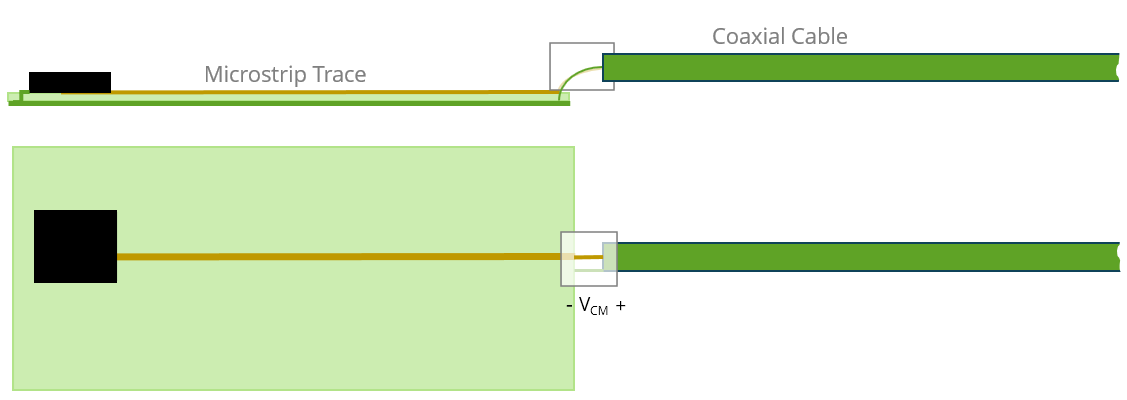EMC Question of the Week: October 7, 2024

A connection between a coaxial cable and a microstrip trace on a circuit board is made through two parallel connector blades. The two blades are identical with a length of 2 cm. They are separated by an air dielectric maintaining a 50-Ω characteristic impedance. A 1-Gbps signal with a peak amplitude of 1-volt passes through the connector. Approximately what is the voltage driving the shield of the cable relative to the circuit board at 1 GHz?
- 1 volt
- 500 mV
- 100 mV
- < 1 mV
Answer
The best answer is “c.” First, the rms amplitude of the signal harmonic at 1-GHz is 0.45 times the signal amplitude in the time domain. So, the signal voltage at 1 GHz is 0.45 volts. When the unbalanced microstrip trace meets the balanced connector, a common-mode voltage is developed that is approximately half of the signal voltage at that point. When the balanced connector meets the unbalanced coaxial cable, the same common-mode voltage is developed with the opposite polarity. These voltages nearly cancel each other, but the cancellation is not perfect due to the phase difference of the two common-mode voltages.
At 1 GHz, the wavelength in air is 30 cm. Propagating 2 cm introduces a phase delay of . The total common-mode voltage is therefore,
Even 1 mV of common-mode voltage driving a coaxial cable shield can produce unacceptable radiated emissions, so this balanced connector is unsuitable carrying single-ended high-speed signals.
This example emphasizes the importance of maintaining electrical imbalance all the way from the source to the termination in high-frequency signal lines. It also demonstrates that the inductance of the return conductor is not important as long as the characteristic impedance of the signal path is unchanged.
Note that the same voltage calculated for a 10 Mbps signal is about 1 mV. At data rates below 10 Mbps, a brief (2 cm) disruption in the electrical imbalance may be acceptable.
Have a comment or question regarding this solution? We'd like to hear from you. Email us at
